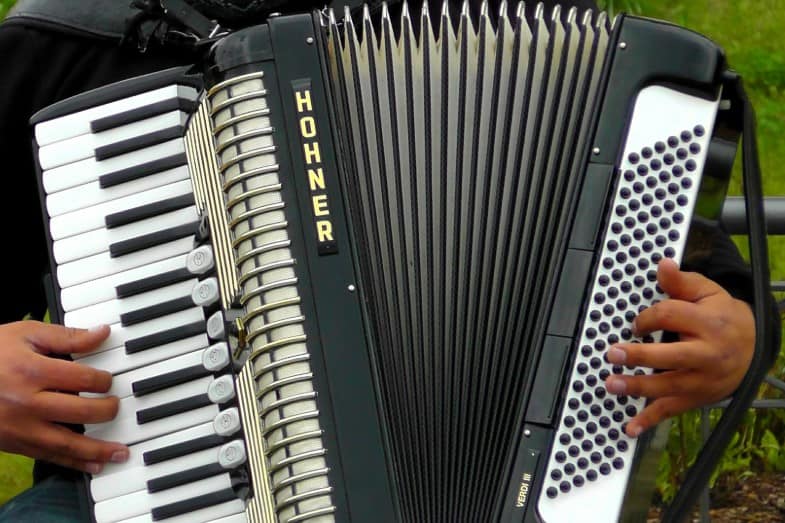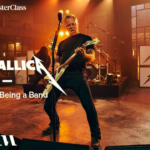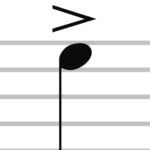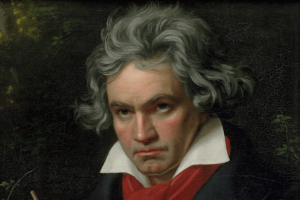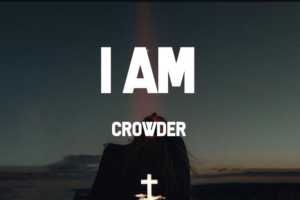Most people assume that heavy metal music is always loud and extreme. They don’t know that there is a type of metal music that is melodic and mainstream. There are different types of metal music – top 21 types that you should know.
Metal music has grown in popularity to such an extent that it now consists of several types and countless scores of subgenres. But the top 21 main types of metal music are the following:
- Heavy Metal
- Avant-Garde Metal
- Alternative Metal
- Power Metal
- Black Metal
- Rap Metal
- Thrash Metal
- Glam/Hair Metal
- Death Metal
- Progressive Metal
- Doom Metal
- Viking Metal
- Post Metal
- Gothic Metal
- War metal
- Metalcore
- Hair Metal
- Christian Metal
- Symphonic Metal
- Nu-Metal
- Crust Punk
Heavy metal, or simply metal music, is an aggressive and loud type of rock music. Usually, heavy metal bands have two guitars, one lead and one rhythm, a bass guitar, and a set of drums. They sing songs that are not only loud but are powerful. Their songs have a strong rhythm that they often repeat throughout the entire song.
Read on to learn more about the top 21 types of metal music, together with an informative description of each.
Types of Metal Music – Top 21 Types

The following sections of this article will discuss the most prominent genres of metal music:
1. Heavy Metal
Heavy metal is the most straightforward of all metal music. It is the classic heavy metal that most people will associate with its earliest form.
Sometimes, hard rock groups are lumped together in this category because they are similar to traditional heavy metal bands.
You could say that rock groups such as Led Zeppelin, Blue Cheer, Deep Purple, Judas Priest, and Black Sabbath can be lined up with this type of music.
2. Avant-Garde Metal
As the word implies, this type of heavy metal music is at the tipping point of the spearhead. This means this metal music has never been heard before. In this metal music type, you will hear non-traditional and unusual instruments.
The song structures of this style of metal are truly different. You will have an idea of this style of metal if you will listen to the songs of Vintersong, Peccatum, Mr. Bungle, Dog Fashion Disco, and Arcturus.
3. Alternative Metal
Alternative metal began to appear in the mid-1980s. It combined the style of heavy metal with alternative rock. But it took time before it gained popularity in the early 1990s. One primary characteristic of this metal genre is mid-paced ‘chug’-like guitar riffs that are heavily down-tuned.
The metal bands singing alternative metal music often have melodic vocals. Sometimes, they use experimental approaches to music and unconventional song structures. Bands that perform alternative metal include Rollins Band, Alice in Chains, Helmet, Tool, and Faith No More.
4. Power Metal
Among heavy metal music genres, Power Metal is one of the most durable sub-genres. Fans of this genre love this metal style because of its epic nature and its glorious-to-a-fault melody lines.
Power metal is a very melodic form of heavy metal. It is usually characterized by strong vocals and soaring guitars, most often in the higher registers. The songs are long and epic, and lyrics often dwell on fantasy, mythology, and metaphysical topics. Most bands in this genre also use a keyboardist.
5. Black Metal
Black metal songs usually have pagan or satanic lyrics and imagery. The vocals are often raspy and high-pitched. This is heavy metal’s extreme sub-genre. Common characteristics of this music are shrieking vocals, unconventional song structures, blast beat drumming, highly distorted guitars with tremolo picking, fast tempos, and raw recording.
You will get a taste of black metal music if you listen to the songs of Mayhem, Burzum, Venom, Emperor, and Bathory.
6. Rap Metal
Bands singing rap-metal music use the lyrical form and vocals of hip hop. This type of metal music is usually mistaken for nu-metal or rapcore. Although Nu-metal has some similar elements, rap metal does not include sampling or turntables in its sounds.
Rapcore, on the other hand, fuses hip hop with hardcore punk. Additionally, rap-metal bands usually have front rappers. This genre also does not have the growling and melodic singing usually associated with nu-metal.
7. Thrash Metal
Thrash metal is one of the significant blends of metal music in the 1980s. But sadly, it has lost its steam and is now barely alive if not for the songs of a few die-hard thrash metal bands today.
This metal music genre uses the original concept of heavy metal. But it speeds up the tempo exponentially and emphasizes guitar playing from the solos to the riffs with a truly intimidating approach. Bands like Slayer, Metallica, Testament, Overkill, Anthrax, and Megadeth perform this metal music type.
8. Glam/Hair Metal
Some believe that the Glam/Hair metal genre is one of the infamous metal music of the 1980s. Is this due to the bands’ glamorous appearance? Most bands of this music genre use synthesizers to be considered glam/hair metal music bands. Some of the bands where you can hear this metal music genre are Motley Cure, Cinderella, Europe, Poison, and Whitesnake.
9. Death Metal
This metal music genre is of the extreme type. It uses deep growling vocals, also called cookie monster vocals, distorted guitars, complex song structures, atonality or minor keys, multiple changes in tempo, and tremolo picking.
Some bands that perform this kind of music type are Morbid Angel, Cannibal Corpse, Deicide, and Death.
10. Progressive Metal

Progressive metal music is characterized by long songs, guitar technical prowess, changing time signatures, and complicated song structures. This is the metal genre that often lends itself to combining different rock-sounding bands into just one category.
Bands that perform this kind of music genre include The Contortionist, Dream Theater, Symphony X, Scale the Summit, Queensryche, and Animals as Leaders.
11. Doom Metal
Doom metal is a genre characterized by slower tempos. As implied by its name, it emphasizes melancholy, gloomy, and bleak music. In contrast with the fastness of Black Metal, Doom Metal tends to be slower and somber without removing the ‘edge.’
This metal music genre has more varied themes, sometimes bordering on personal instead of sacrilegious or religious topics. The bands that perform this kind of music are Cathedral, My Dying Bride, Candlemass, and Paradise Lost.
12. Viking Metal
Viking metal came from Nordic folk music and black metal. Songs of this music type have a thematic and lyrical focus on the Viking Age, Norse paganism, and Norse mythology. The music is slow-paced, with heavy guitar riffing style, harsh and clean vocals, anthemic choruses, and keyboards to produce an atmospheric effect.
The bands performing this metal genre include Bathory, Thyrfing, Burzum, Falkenbach, Storm, Darkwoods My Betrothed, and Enslaved.
13. Post Metal
The Post Metal music genre is more like rock, which is usually grouped. They tend to borrow elements from rock but can sometimes be more ambient or relaxed than other metal music genres.
Bands performing in this category tend to dwell on personal matters and lean towards metaphorical and poetic lyrics. Cult of Luna, Katatonia, Deafheaven, Neurosis, and Alcest are some bands that perform this kind of music.
14. Gothic Metal
This metal music genre is a mixture of the melancholy and darkness of heavy metal and Goth rock. It utilizes male and female vocal combinations. The male voice usually takes on the more aggressive role while the female sings ethereal soprano.
Some bands that perform this kind of metal music are Theatre of Tragedy, Leaves Eyes, Tristania, and Lacuna Coil.
15. War Metal
This metal music is also called bestial black metal or war black metal. The songs are usually chaotic, cacophonous, rabid, aggressive, and hammering. The bands that perform this kind of metal music are Impiety, Blasphemy, Possessed, Sodom, Zyklon-B, Archgoat, and In Battle.
16. Metalcore
This metal music genre is more like contemporary metal. While the music is heavy and aggressive, it is not challenging. Songs of this music type are often clean, with clearer vocals and well-produced overall. Bands who dwell on this genre are All That Remains, Shadows Fall, Trivium, As I Lay Dying, Killswitch Engage, and August Burns Red.
17. Hair Metal
This music genre is also called hairspray metal and pop-metal. It has more mass appeal and is very melodic. The most successful but critically despised heavy metal bands specialize in this genre. Bands that perform this type of music are Winger, Ratt, White Lion, Warrant, and Poison.
18. Christian Metal
This metal music genre is also called white metal. The songs use lyrics that are dedicated to Christianity. They are usually performed by bands professing themselves as Christians. Their songs are geared towards Christians who love heavy metal music. Bands who sing this type of music include Norma Jean, As I Lay Dying, P.O.D., Demon Hunter, and Underoath.
19. Symphonic Metal

This metal music is heavy metal music that utilizes orchestral elements. The bands use either a real orchestra with real orchestral instrumentalists or keyboards to simulate classical instrument sounds. Bands that dwell on this music genre are Rhapsody of Fire, Within Temptation, Therion, Nightwish, and Epica.
20. Nu Metal
This metal music genre is a combination of hip-hop elements like rapped lyrics with heavy metal riffs. Its peaked was during the late 1990s through the early 2000s but eventually lost its popularity. Some bands that sing this metal genre are Papa Roach, Korn, Slipknot, and Limp Bizkit.
21. Crust Punk
Crust punk is a music metal genre that came from extreme metal, hardcore punk, and anarcho-punk. Its style evolved during the mid-1980s. The songs usually have pessimistic and dark lyrics. This music genre is characterized by ‘dirty’ and ‘bassy’ sounds.
Vocals are guttural, with some growling and screaming. The time signature is often fast but may slow down occasionally. Bands that sing crust punk metal include Doom, Antisect, and Amebix.
Brief History of Metal Music
Heavy Metal Music Has Many Styles and Subgenres
Most people will assume that all loud music can be considered heavy metal music. They don’t know that this kind of music has many styles and countless subgenres. In reality, the term ‘heavy metal’ is an umbrella word that characterizes a type of music that is usually aggressive and loud.
Metal Genres Developed in the Late 1960s to Early 1970s
But there are genres in metal music that are also mainstream and melodic. Other genres are extreme and underground. The development of some of the metal genres started in the late 1960s to the early 1970s, when heavy metal music was born.
Each Metal Genre Has Different Characteristic
There are times when these different metal genres overlap each other, making them very hard to distinguish. But you still can identify them by their individual characteristics. They can differ in the following:
- Tempo,
- Instrumentation,
- Vocal style,
- Song structure,
- Style of guitar playing,
- Lyrics,
- Drumming style, and so forth.
First Heavy Metal Bands
Heavy metal was first used as a musical term because of the 1960s song of the rock band Steppenwolf titled “Born To Be Wild,” where they mentioned ‘heavy metal thunder.’ Some have argued that the first heavy metal bands were Deep Purple, Led Zeppelin, and Black Sabbath.
Since then, different metal styles have developed, eventually branching out to scores of different genres and subgenres. This music style still plays an important role in today’s music. Many heavy metal groups have sold out CDs and concert tours without much mainstream media exposure or radio airplay.
Electric Guitar Is the Backbone of Metal Music
The electric guitar is and will forever be the backbone of metal music. There is no metal music without at least one guitarist. Many heavy metal bands even have two or more guitarists.
Some Metal Music Have Mellow and Quiet Parts
Most metal music is loud, aggressive, fast, and intense. But there are some which have mellow and quiet parts. Depending on the genre, metal music can have vocal styles that are melodic, aggressive, incomprehensible, and even screaming at times.
Conclusion: Types of Metal Music – Top 21 Types
Since its popularity among heavy metal fans, metal music has mushroomed into many types and hundreds of subgenres. The main types, however, remain to be the following:
- Heavy Metal
- Avant-Garde Metal
- Alternative Metal
- Power Metal
- Black Metal
- Rap Metal
- Thrash Metal
- Glam/Hair Metal
- Death Metal
- Progressive Metal
- Doom Metal
- Viking metal
- Post Metal
- Gothic Metal
- War Metal
- Metalcore
- Hair Metal
- Christian Metal
- Symphonic Metal
- Nu-Metal
- Crust Punk
Read next:

